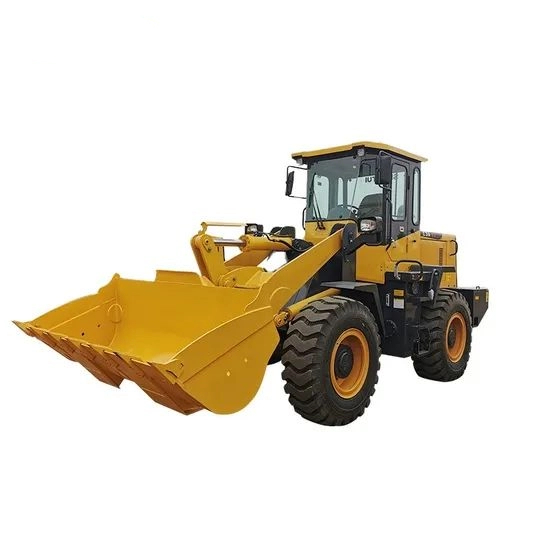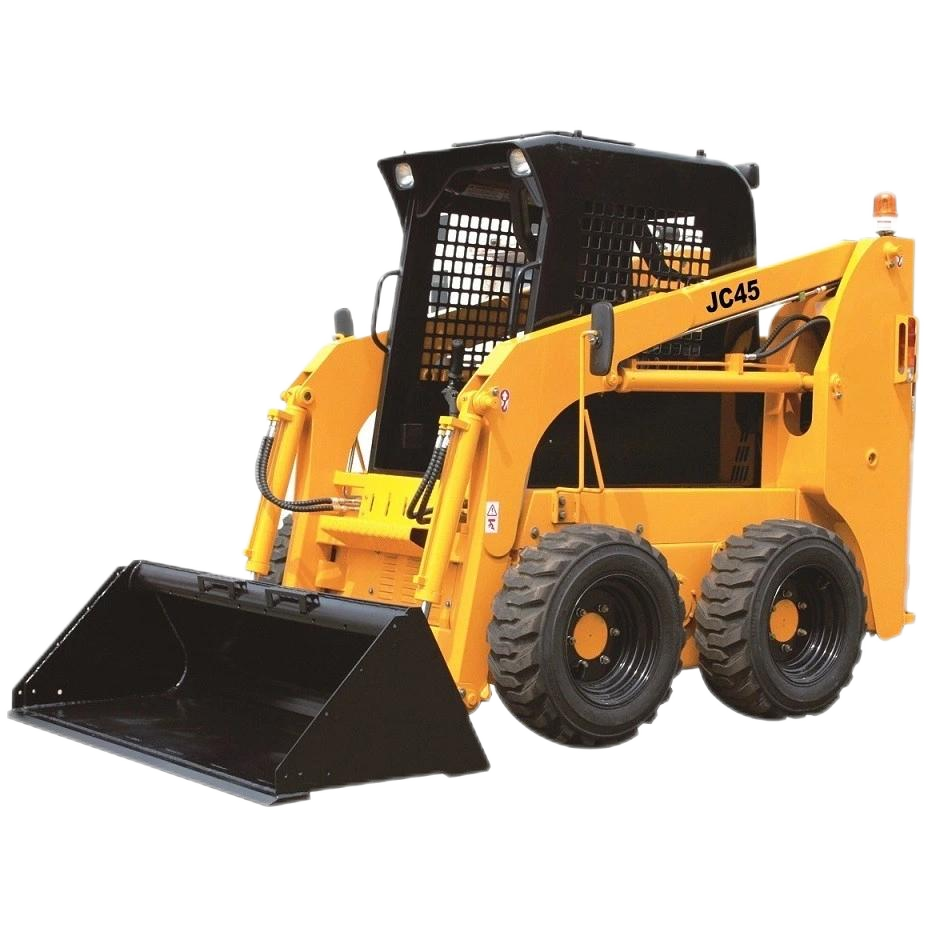Both wheel loaders and skid steer loaders are commonly used mechanical equipment in engineering construction. The following is a detailed introduction to them:
Definitions and Applications
- Wheel Loader: It is a soil-shoveling and transporting machine widely used in highways, railways, ports, docks, coal mines, mines, water conservancy, national defense and other projects as well as urban construction. Its main function is to shovel and transport loose materials over short distances.

- Skid Steer Loader: Also known as skid loader or multi-functional engineering vehicle, it is a wheeled special chassis equipment that realizes vehicle steering by utilizing the linear speed difference between the wheels on both sides. It can quickly replace or attach various working devices on the job site, and is suitable for occasions with narrow working spaces, uneven ground and frequent changes in work content.

Structural Characteristics
- Wheel Loader
- Overall Structure: Generally composed of a frame, power transmission system, traveling device, working device, steering and braking device, hydraulic system and operating system, etc.
- Steering Mode: The frame is usually composed of front and rear parts, connected by a hinge pin in the middle. The steering cylinder enables the front and rear frames to rotate relatively around the hinge pin to achieve steering.
- Working Device: One end of the boom is hinged on the frame, and the other end is equipped with a bucket. The lifting of the boom is driven by the boom cylinder, and the flipping of the bucket is realized by the bucket cylinder through the rocker arm and connecting rod.
- Skid Steer Loader
- Overall Structure: Compact in structure, adopting a wheeled traveling mechanism, full-wheel drive and skid steering.
- Steering Mode: It can realize 360° in-place steering by utilizing the linear speed difference between the wheels on both sides, and the minimum turning radius is less than half of that of an articulated loader of the same class.
- Working Device: Equipped with a quick-change device, which can quickly replace or attach various working attachments such as buckets, sweepers, snow blowers, milling machines, and forks to adapt to different working environments and work contents.
Performance Characteristics
- Wheel Loader
- Power and Efficiency: It has a relatively large engine power and bucket capacity, and is generally used for shoveling and transporting a large amount of loose materials. It has a short working cycle time and high loading efficiency. For example, a front loader with a bucket capacity of 5-8m³ can reach a speed of more than 35km/h, and each working cycle only takes 40-45 seconds.
- Traction and Climbing: It has strong climbing ability and good maneuverability, and can perform loading operations on sloped working surfaces with a certain gradient.
- Stability: Due to its large body and long wheelbase, it has good stability during operation, making it suitable for operations that require large force and stability.
- Skid Steer Loader
- Power and Efficiency: The power is generally 20-50 kilowatts, the host weight is 2000-4000 kilograms, and the vehicle speed is 10-15 kilometers per hour. Although its power and speed are relatively smaller than those of wheel loaders, it has high efficiency in completing various small-scale operation tasks because it can quickly replace attachments.
- Traction and Climbing: It adopts full-wheel drive without an inter-wheel differential, and with its ultra-short wheelbase design, it has strong off-road capability and can work well on uneven ground.
- Flexibility: It has a small body and can work flexibly in narrow spaces, such as urban infrastructure, roads or construction sites, factory workshops, warehouses, docks and other narrow places.
Applicable Scenarios
- Wheel Loader
- Mining Operations: Widely used in open-pit mine development and stripping, ore loading and transportation, etc. It can work in conjunction with automobiles to transport ore and rock to crushing stations.
- Road Construction: Used for shoveling, transporting and leveling materials in projects such as highway and railway foundation construction and road repair and paving.
- Large-scale Engineering Construction: Such as water conservancy projects, port construction, etc., for transporting a large amount of earthwork and bulk materials.
- Skid Steer Loader
- Narrow Space Operations: Particularly suitable for operations in narrow places such as urban streets, residential construction, barns, and livestock houses, such as material handling in interior decoration and garbage cleaning after small-scale building demolition.
- Multiple Operation Requirements: Due to the ability to quickly replace attachments, it can be used for various operations such as shoveling and transporting, stacking, lifting, excavating, drilling, crushing, grabbing, pushing and raking, loosening soil, digging trenches, road cleaning and road compaction.
- Auxiliary Operations: It can be used as an auxiliary equipment for large-scale engineering construction machinery to perform logistics support, site cleaning and project closing work.





